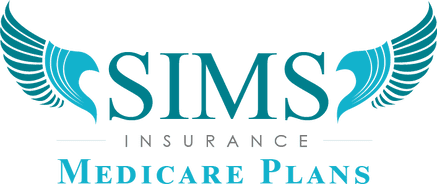Prescription drug coverage is a critical component of any healthcare plan, making it essential to understand the complexities of Medicare Part D, which covers prescription drug expenses. As Medicare beneficiaries, it’s crucial to have comprehensive knowledge of how these plans can help manage prescription costs while ensuring you receive necessary medications. At Sims Insurance Medicare Plans, we strive to empower our clients with insightful information and guidance designed to assist them in making informed decisions about their healthcare coverage.
In this blog post, we’ll delve into the ins and outs of Medicare Part D – the prescription drug coverage component of Medicare. You’ll learn about eligibility criteria for these plans, the costs involved, coverage levels, and the various enrollment processes and deadlines to bear in mind. We’ll also discuss how to compare different Part D plans to determine which option best suits your unique healthcare needs and financial situation.
Understanding the details of Medicare Part D is integral to managing your healthcare expenses, particularly when it comes to prescription drugs. Thorough knowledge of eligibility, enrollment processes, and potential penalties will ensure that you’re well-prepared to select the ideal prescription coverage for your needs.
With a comprehensive understanding of the Part D landscape, you’ll be better equipped to make informed choices about your Medicare prescription drug coverage. Remember, experts like us are always here to guide you through the complexities of the Medicare world and provide personalized support tailored to your individual needs.
For assistance with any questions related to Oregon Medicare Insurance Agency, including the nuances of Medicare prescription drug coverage, reach out to the knowledgeable team at Sims Insurance Medicare Plans. We’re here to help you navigate the often complicated world of Medicare and ensure you receive the coverage you need.
Understanding the Ins and Outs of Medicare Prescription Drug Coverage – Part D
Eligibility Requirements for Medicare Part D
Before we explore the details of Medicare Part D, it’s important to understand the eligibility requirements. To be eligible for Medicare prescription drug coverage, you must:
1. Be enrolled in either Medicare Part A or Part B.
2. Reside in the service area of a Medicare Part D plan.
If you meet these requirements, you may choose to enroll in a stand-alone prescription drug plan (PDP) or a Medicare Advantage plan that includes prescription drug coverage (MA-PD). Be sure to consider your overall healthcare needs when selecting a plan that offers the right combination of coverage and prescription benefits.
Understanding Costs Associated with Medicare Part D
Medicare Part D costs can vary based on the specific plan you choose. There are several cost components to be aware of, including:
1. Monthly premiums: The amount you’ll pay each month for your prescription drug coverage. Premiums can vary between different plans and providers.
2. Deductibles: One-time, out-of-pocket expenses you must pay before your plan covers prescription costs. Deductibles may vary by plan and are subject to annual limits set by Medicare.
3. Copayments and coinsurance: The portion of prescription drug costs you’re responsible for paying after meeting your deductible. These costs can vary depending on your plan and the type of medication.
4. Coverage gap (donut hole): A temporary coverage limit where you will be responsible for a higher cost-sharing percentage for your prescription drugs. Most plans have a coverage gap, but it is gradually being phased out.
Knowing the costs associated with various Part D plans will help you choose one that best aligns with your healthcare budget and specific needs.
Medicare Part D Coverage: Comparing Plans
When comparing Medicare Part D plans, pay close attention to the plan’s formulary, a list of prescription drugs covered by the specific plan. Different plans may have different formularies, which affect your out-of-pocket costs. Keep the following in mind when comparing plans:
1. Are your prescription medications included in the plan’s formulary?
2. What are the plan’s costs, including premiums, deductibles, copayments, and coinsurance?
3. Does the plan have a preferred pharmacy network? How does it affect your drug costs?
4. Is the plan rated well for customer service and overall satisfaction?
Taking these factors into account will help you select a plan that offers comprehensive and cost-effective coverage for your prescription drug needs.
Enrollment Process and Timing for Medicare Part D
Enrolling in a Medicare Part D plan during appropriate enrollment periods is crucial to ensure continuous coverage and avoid potential penalties. There are multiple enrollment periods for those seeking prescription drug coverage:
1. Initial Enrollment Period (IEP): A 7-month enrollment window surrounding your Medicare eligibility, which includes the three months before, the month of, and the three months following your 65th birthday or enrollment in Medicare Part B due to disability.
2. Annual Election Period (AEP): Also known as Open Enrollment, AEP occurs annually from October 15th through December 7th, during which you can join, switch, or drop a Medicare prescription drug plan.
3. Special Enrollment Period (SEP): If you experience a qualifying life event, such as losing employer-sponsored coverage or relocating to a new service area, you may be eligible for an SEP to make changes to your prescription drug coverage.
Missing an enrollment period can result in increased premiums, known as the late enrollment penalty, which lasts for the duration of your Medicare Part D coverage. Thus, adhering to enrollment timelines is essential for affordable and comprehensive prescription drug coverage.
Conclusion
Understanding the ins and outs of Medicare Part D eligibility is vital to managing your healthcare expenses, particularly in terms of prescription drug costs. By being aware of the eligibility requirements, associated costs, coverage levels, and enrollment processes, you’ll be better equipped to choose the ideal plan tailored to your unique healthcare needs and budget constraints.
For personalized guidance and expert advice on understanding the complexities of Oregon Medicare Insurance Agency and selecting the right Medicare prescription drug coverage, reach out to our experienced team at Sims Insurance Medicare Plans. We’re committed to simplifying the Medicare process and ensuring you receive the healthcare coverage you need and deserve.


